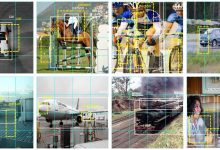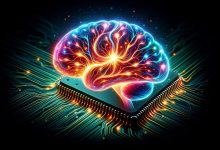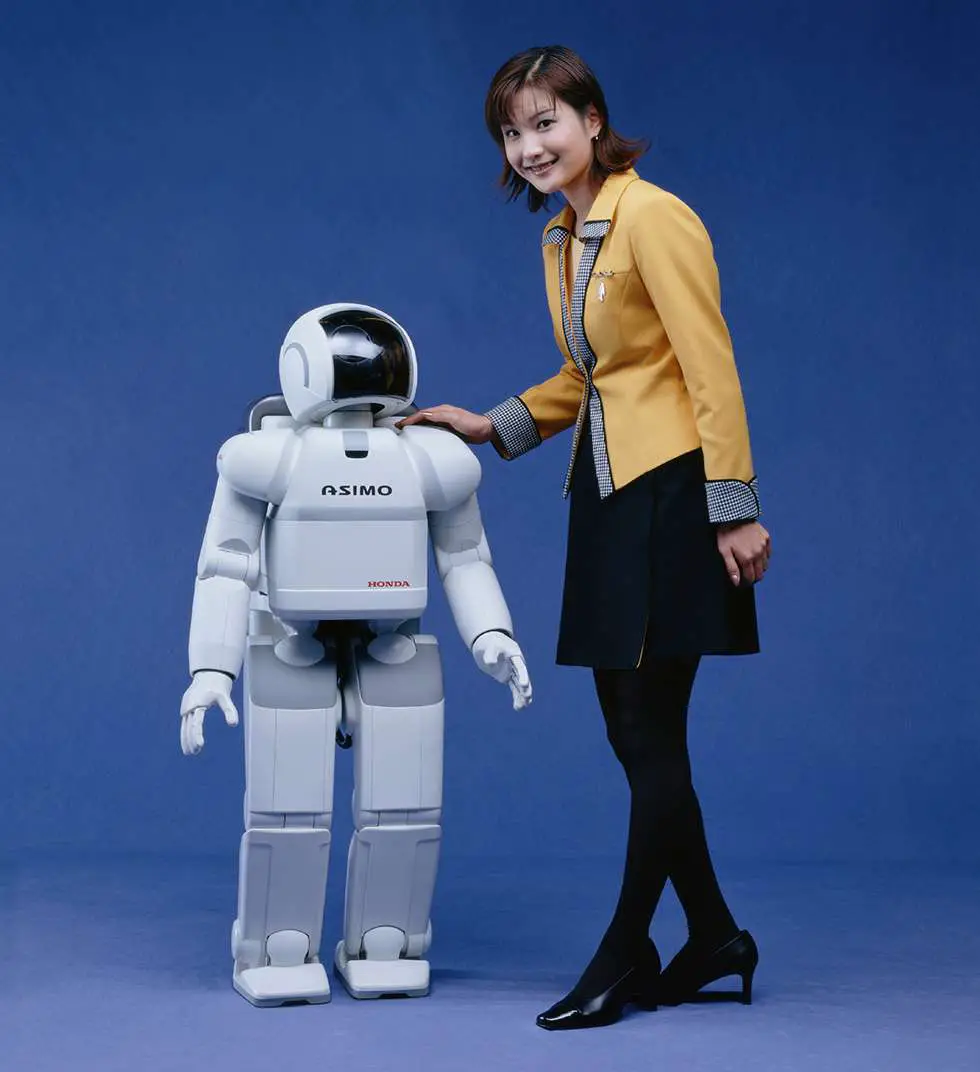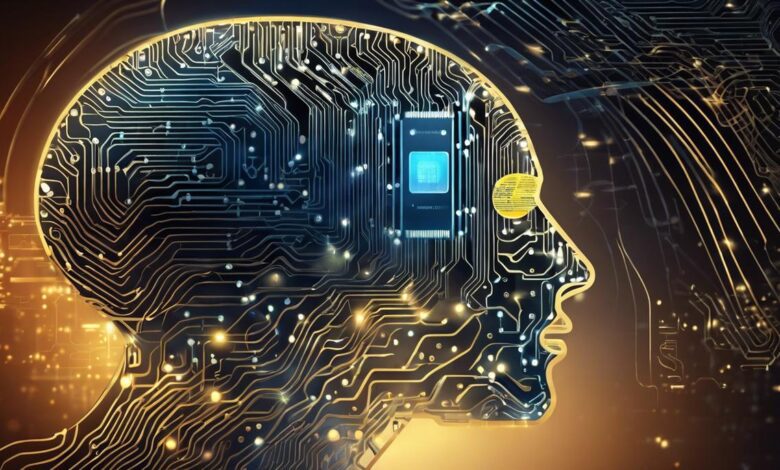
In this ever-evolving digital age, one cannot overlook the profound impact Artificial Intelligence (AI) is imprinting on human lives and its potential to redefine the future of technology. It stands as a beautiful testament to mankind’s relentless pursuit of innovation, propelling us to progressive heights that were once confined to the realm of imagination. This discourse endeavors to demystify AI, spotlighting its concepts, techniques, novel applications across disciplines, ethical conundrums, and its captivating future prospects. As we navigate this intricate tale, we will weave through the theoretical bedrock, practical applications, and divergent debates manifested within AI’s realm, offering an enlightening inquiry into a complex and exciting field that knits computing and cognition.
Defining Artificial Intelligence
Artificial Intelligence, colloquially known as AI, is an interdisciplinary field of science that engrosses a prodigious amount of ingenuity and innovation. Imbued with fascinating cogitations to make machines mimic human intelligence, AI has emerged as a subject of unlimited potential, positioned at the intersection of computer science, mathematics, cognitive psychology, and neuroscience among others.
Although early AI pioneers dreamt of building fully autonomous machines that operate and think like humans, AI’s vast umbrella now extends beyond the realm of human cognition. These non-human-like aspects of AI, characterized by machine learning and data processing systems, contribute noticeably to what is currently accepted as AI.
Scientifically speaking, there are two main types of AI classified primarily based on capabilities. Narrow AI, also known as weak AI, is a type of AI that can accomplish specific tasks as well, if not better than humans. Examples include recommendation engines, like those used by Netflix or Amazon and facial recognition systems used by social networking sites like Facebook.
On the contrary, General AI, also known as strong AI, is characterized by machines that possess cognitive abilities akin to those of humans. They can handle any intellectual task that a human being can, understand, interpret, and even experience emotions. Although General AI is still underdevelopment, it’s no less significant in the grand narrative of AI’s evolution.
Another consideration, often less explored, is based on the self-dependency of AI systems. Reactive AI doesn’t have any ability to form memories or use past experiences for current decision-making. It reacts to a present situation without any reference from the past.
Limited memory AI, as the name suggests, can make informed decisions based on historical data to a certain extent and then discard it when it’s no longer needed. Almost all present applications in AI make use of limited memory AI.
Theory of mind AI refers to systems that understand, interpret, and anticipate human emotions, a vital aspect for dynamic human-computer interaction. An example to look forward to in this category would be humanoid robots.
Self-aware AI, the pinnacle of AI evolution projected by scientists, refers to systems that have a sense of consciousness and self-awareness. While it’s currently in the realm of science fiction, the aspiration to achieve this level reflects the innate human curiosity and ever-pursuing scientific vigor.
This fascinating journey exploring the vast realm of Artificial Intelligence is akin to peeling the layers of a complex, sophisticated onion. Each classification, each type, and each advancement made within this multifaceted field provides a richer understanding and ignites a more fervent passion for the seamless integration of machine and human intelligence. Indeed, it perfectly reflects the gravity, profundity, and sheer beauty of uncompromised scientific exploration and innovation.
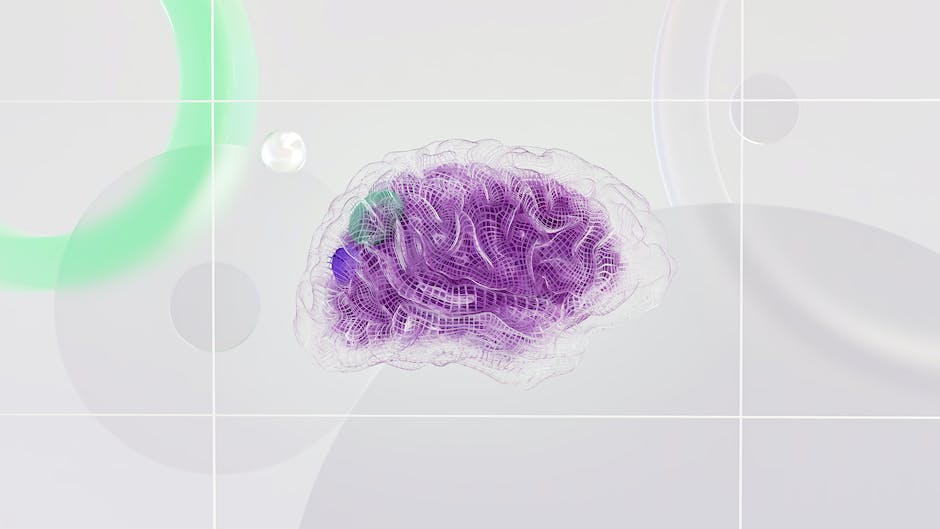
AI Techniques & Theories
Probing Into the Fabric of Artificial Intelligence: Exploring Foundational Theories and Techniques
Central to the thriving arena of Artificial Intelligence (AI) are its profound theories and distinguished techniques that outline its core framework. A deeper examination of these homegrown principles provides valuable insights into the intricacies of this pioneering field, encompassing everything from simple problem-solving algorithms to complex cognitive systems.
Familiarization with these theories and techniques elucidates the functionality of conventional AI models, offering a lucid comprehension of the remarkable range of applications that this technology presents.
The backbone of AI circles around learning, reasoning, problem-solving, perception, and linguistic intelligence. At its crux lies learning technologies, graced by Reinforcement Learning (RL) and Supervised Learning. RL is best observed in gaming AI, where an agent learns how to traverse a game environment by receiving rewards or penalties for its actions. Conversely, Supervised Learning, a popular Machine Learning approach, involves the AI model learning to make predictions from labeled input and output data.
Reasoning, another critical attribute of AI, is demonstrated via the use of logical AI. Prolog (Programming in Logic), an AI programming language, embodies this technique by employing logic concepts and predicate calculus to solve problems. Similarly, Problem-Solving, an indispensable aspect of AI, leverages algorithms such as the A* Search Algorithm, Hill-Climbing, or Genetic Algorithms, enabling efficient handling of complex problems and optimization issues.
AI’s perception primarily manifests through its adept use of sensors and digital input, culminating in pattern recognition and computer vision. Techniques like Deep Learning and Neural Networks are quintessential in analyzing massive sets of unstructured data and making sense of them for various tasks including image analysis, natural language processing, and medical diagnosis.
The next stop on our exploratory voyage is Linguistic Intelligence– linguistics and semantics usher in terrific advancements in AI’s communicative abilities. Natural Language Processing (NLP), an AI subset, bolsters the ability of machines to understand and communicate in human language, facilitating their integration into daily life.
Going beyond the realm of human means, AI’s autonomous functioning leaps forward with advanced algorithms and models. First, Bayesian Networks, probability-based models, predict future events based on evidence. Second, the Pareto Principle or the 80-20 Rule aids AI systems in efficient decision-making. Lastly, Markov Decision Processes offer a Math-based approach to optimize decision-making in controlled random environments.
Lastly, an AI technique with broader implications is Swarm Intelligence (SI). Based on the natural behavior of species such as ants and birds, SI allows decentralized and self-organized systems to solve complex problems.
In summary, AI persistently widens its reach by constantly redefining its boundaries and enhancing its capabilities, bolstered by a sophisticated blend of learning, reasoning, problem-solving, perception, and linguistic intelligence, powered by deep-rooted AI techniques and theories. The ability to adapt, invent, and constantly evolve defines the essence of AI, sketching the blueprint of a future dominated by unprecedented technological prowess. Likewise, it underlines the need for responsible and conscious decision-making in AI development to harness and direct this power in the best interests of humanity.

Applications of Artificial Intelligence
Delving Deeper into the Realm of AI Applications
The tentacles of Artificial Intelligence, commonly denoted as ‘AI’, has infiltrated numerous sectors and spheres of human life, diversifying the canvas of its applications across a plethora of fields. From assisting diagnosed patients to make informed decisions about their heath in medical sector, uplifting the security systems judiciary, transforming the face of financial transactions in banking, AI holds immense potential of revolutionizing the existing systems holistically.
Ever marveled at Amazon’s Alexa responding to your queries with absolute precision or Siri on your iPhone understanding your commands and executing them to the T? The crux lies in the application of AI in the field of linguistics. Through AI-generated Natural Language Processing (NLP), these machines are adept at understanding, interpreting and responding to human language in a way that is both contextual and comprehensive. Further, sentiments embedded in human speech aren’t lost upon these machines either, thanks to the integration of sentiment analysis within NLP, holding a direct implication on customer service forums, marketing research and much more.
Navigating towards the medical arena, AI is steadily demonstrating its potential in reshaping diagnostic measures and drug discovery processes. Leveraging predictive analytics, AI arduously analyses patient records to predict potential health threats and diseases, aiding in early detection and therefore better prognosis. Additionally, AI in radiology expands the horizons by accurately interpreting imaging results, thereby curbing human-error and enhancing diagnostic accuracy.
The canvas of commerce and economics isn’t devoid of AI’s touch. Businesses leverage AI for predictive analytics, providing them a glimpse of future sales trends and customer preferences. This substantial information directs business strategies and decision-making processes. Furthermore, AI-enabled chatbots not only revolutionize customer services by providing round-the-clock assistance but also offer a personal touch by predicting customer preferences based on past interactions.
Spheres of cybersecurity witness the enhanced application of AI as well. Intrusion Detection Systems (IDS) employ AI to detect abnormal behavior or use, ensuring the immediate identification and remediation of threats. Additionally, AI initiatives such as biometric login methods and two-factor authentications elevate security measures, minimizing the threat of hacks or data breaches.
Artificial Intelligence’s insertion into aerospace and aviation sectors has been nothing short of transformative. Automated drones, flight simulators, and air traffic controls powered by AI have kindled a new era of advancements, proving AI’s mettle in contributing to technological breakthroughs.
While these areas of applications depict the diversity of AI application, an important point to note is the quintessential need for ethical considerations in AI development. A system devoid of biases, transparency in decision-making, user privacy protection and assurance of non-exploitation are some crucial facets that need constant monitoring in the world of AI.
Thus, the applications of AI are multifold and traverse across various sectors, embodying transformative potential. One thing is for certain: AI’s presence will only intensify in the future, translating into innovations and advancements hitherto unimaginable.

Ethical Considerations & Challenges
As we ponder over the already established parameters of Artificial Intelligence, it is equally imperative to explore the ethical landscape that accompanies AI. With the exponential advancement in AI technology and its percolation into diverse fields, ethical concerns have emerged that necessitate rigorous analysis. It is often an untraversed territory that requires our immediate attention to ensure that AI remains a tool for the enhancement of human life and not a potential threat.
The first ethical challenge that arises with AI is privacy. As AI systems become increasingly adept at processing and analyzing data, the risk of violating personal privacy surges. For instance, AI technologies like facial recognition and predictive analytics work on vast pools of data collection. These data troves, holding sensitive personal information, if mishandled or breached, could have far-reaching detrimental impacts. Thus, handling and protecting data privacy in AI development is indeed an ethical concern that demands adherence to the highest standards of data protection.
Job displacement is another burning ethical question attached to AI development. Whilst AI brings about enhanced efficiency and productivity, it comes at the expense of certain job roles, particularly in manufacturing and other labor-intensive sectors. With AI being capable of automating repetitive tasks, the likelihood of job losses looms large in these sectors. Therefore, it is our responsibility as a society, to ensure appropriate measures are taken in skill enhancement and re-skilling programs to cushion the impact of potential job displacement.
Another vital ethical question originates in bias and discrimination. Despite AI intended to provide an unbiased perspective, there’s a potential risk of perpetuating bias if the algorithms are trained on biased data or designed by a homogenous team of developers. The societal ramifications of such an anomaly can be devastating leading to employment discrimination, unjust loan decisions, or prejudiced law enforcement. Hence, a keen emphasis should be laid on fostering algorithmic fairness in AI systems to alleviate bias and discrimination.
Moreover, the question of AI’s decision-making autonomy and related accountability is a critical ethical concern. As AI continues to evolve, it gains a potential to make decisions without human intervention, possibly even surpassing human cognitive capabilities. This prompts the question, “Who is accountable if an AI based system commits an error or causes harm?” Assigning liability further becomes complicated when the AI system is designed to learn and adapt independently. Therefore, legislations and policies need to be developed keeping in mind the issue of AI’s ever-increasing autonomy.
Finally, as AI extends its reach into personal lifestyle through technologies such as personal digital assistants, ethical questions associated with human dignity and dehumanization become prominent. While these technological marvels offer convenience, they might also lead to greater isolation, reduced human interaction and thereby contributing to an erosion of essential human skills and values.
AI, as a powerful tool, has the potential to elevate many sectors of our society to new heights. However, the concerns and questions associated with its ethical use are crucial and demand intense contemplation and robust regulation. These challenges should serve as a beacon, guiding our responsible journey forward, as we continue to unravel the vast potential of AI. To ensure AI’s beneficial role in our future, it’s imperative to navigate its ethical landscape with meticulous care.

The Future of Artificial Intelligence
Advancing into the unknown: The Future of Artificial Intelligence
The fascinating expedition into the world of Artificial Intelligence (AI) leaves numerous paths for exploration. Despite having already delved into varied aspects of AI such as learning technologies, reasoning, problem-solving, perception, autonomy, linguistic intelligence, and ethics, there are still intriguing dimensions yet to uncover.
First, let us consider the prospects in quantum computing. This emerging field, which leverages quantum mechanics to enhance computational power, could potentially remodel AI. Faster processing speeds and the efficiency of Quantum Computers could possibly push AI applications into a new era of increased accuracy and problem-solving capacities.
Another piquing factor is the emergent interdisciplinarity between AI and neuroscience. This fusion offers exciting prospects in the development of AI cognitive models based on the construction and functioning of the human brain. Linking neuroscience findings with AI could yield powerful artificial neural networks that mimic human cognition with higher fidelity.
The prospects in AI ethics also present an intriguing inquiry. As AI encroaches more into our daily lives, constructing ethical AI algorithms become paramount. This extends not only to principles of non-maleficence and beneficence but also justice and respect for autonomy. AI technologies, such as facial recognition or social media algorithms, demand unbiased judgment. Therefore, embedding ethical principles into AI creation could steer its future towards a justice-oriented trajectory.
Reflecting upon the future of AI, it’s impossible not to consider the philosophical question of Artificial Consciousness (AC). A controversial concept, AC or machine consciousness, revolves around the possibility that a machine could someday exhibit subjective experiences. While the notion remains purely speculative as of our current knowledge, continuing advances in AI could introduce valid explorations into AC in future decades.
Furthermore, the issue of AI law and regulation, undoubtedly, will gain importance. As AI matures and permeates across various sectors, regulatory norms will need to evolve correspondingly. This spans across the spectrum from data usage and privacy to licenses for autonomous vehicles to laws for AI engagement in trading stocks.
Moreover, continual advancements in AI portend the rise of ubiquitous AI, extending the reach of AI into every corner of human life. Ubiquitous AI implies a future where AI is integrated seamlessly into our surrounding environment, facilitating and enriching human lives in new, unprecedented ways.
Lastly, the future of AI could unveil a new realm where we shift from being mere users of technology to becoming cyborgs – entities that combine both biological and artificial elements. Can AI form a symbiotic relationship with the human mind? While it sounds like the realm of science fiction, ongoing developments in brain-computer interfaces suggest that such a future may not be purely fantastical.
In conclusion, vast fields of exploration lay ahead in AI’s future. Quantum computing, interdisciplinarity with neuroscience, ethical algorithms, artificial consciousness, legal concerns, ubiquitous AI, and the concept of Cyborgs are only but a few facets in this multidimensional gem. One must approach these explorations with equal measures of curiosity, caution, and commitment to ensure that artificial intelligence unfolds as a boon to humanity rather than a bane.

AI’s potential is vast and its implications profound – cutting across sectors, spawning innovation, catalyzing disruptions, and challenging the contours of convenience, comprehension, and competence. It propels us into a fascinatingly perplexing maze of possibilities, redefining norms, shaping facets of life, and raising consequential ethical queries. While we ride on the cusp of this monumental technological wave, it is imperative to ponder not just on AI’s breathtaking exploits, but also its societal footprints and implications. The narrative of AI is still being written and it is incumbent upon us, as the authors, to ensure that this technology is harnessed in a manner that bodes well for mankind’s welfare, ensuring that our AI-driven future embodies our shared aspirations of progress, prosperity, and peace.
Writio: Your AI content writer and SEO consultant. This brilliant article was crafted by Writio.
